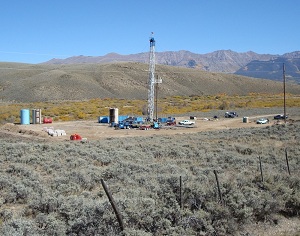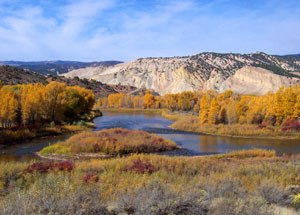Sportsmen and women are a vital thread in the fabric of the West. They fuel a significant part of the Colorado economy - generating more than $3 billion each year in Colorado and supporting 34,000 jobs, especially in rural communities. And sportsmen are some of our greatest conservationists, proudly carrying on the traditions of Colorado's first settlers. It is a valuable tradition to pass along to the next generation, as well, because it teaches healthy lifestyles, responsible gun ownership and our Western heritage.
As I look ahead to 2013, I will do everything I can to support our hunting and angling heritage and ensure it remains a vital part of our state.
 For starters, I plan to complete work on my bill to expand safe public shooting ranges. This common-sense and bipartisan piece of legislation doesn't cost taxpayers a dime, gives states greater flexibility regarding federal money they already receive, provides sportsmen a better return on investment for the fees they pay on ammunition and sporting goods and results in better, safer places for shooters to practice their sport responsibly.
For starters, I plan to complete work on my bill to expand safe public shooting ranges. This common-sense and bipartisan piece of legislation doesn't cost taxpayers a dime, gives states greater flexibility regarding federal money they already receive, provides sportsmen a better return on investment for the fees they pay on ammunition and sporting goods and results in better, safer places for shooters to practice their sport responsibly.
We were very close to U.S. Senate approval of my legislation last year as part of a bipartisan package of bills benefiting sportsmen. Sadly, the bill failed to pass when a minority of senators objected to an unrelated provision on duck stamps - during the "lame duck" session of Congress, no less. I will be back again to take up the fight this year.
I also will continue fighting for common-sense access to our public lands for sportsmen. For example, we should fund the Land and Water Conservation Fund fully and set aside a portion of it for sportsman access. This critical fund uses natural resource extraction royalty payments to reinvest in conservation, wildlife habitat and outdoor recreation for future generations. Unfortunately, this program rarely has received the full funding it deserves. As a result, the program moves forward in fits and starts.
Moreover, I plan to continue my work to protect and enhance conservation and quality wildlife habitat. Last year, I began a community-driven, ground-up process to designate new protections for public lands in Colorado. Backcountry wilderness is beneficial for hunters and anglers for obvious reasons: Cleaner water and undisturbed wildlife  corridors make for more robust game populations and quality hunting and angling opportunities.
corridors make for more robust game populations and quality hunting and angling opportunities.
And I will continue to develop proposals in 2013 to protect Brown's Canyon on the Arkansas River, the San Juan Mountains in southwest Colorado and pristine areas in Eagle, Pitkin and Summit counties. These efforts will strengthen rural communities whose economies depend on hunters and anglers and reinforce Colorado's position as a top destination for sportsmen and women from across the world.
In a related victory, late in 2012, I secured a major positive step in the cleanup of abandoned mines. These mines pose big environmental problems for Colorado, poisoning thousands of miles of rivers and streams, killing aquatic life and hurting water quality. At my urging, the U.S. Environmental Protection Agency developed a new policy encouraging cleanup of this pollution using third-party groups who volunteer to clean up the sites - so-called good Samaritans, like Trout Unlimited. I will continue to fight for cleanup funding and to remove any remaining legal impediments to good Samaritans willing to help preserve our streams and waterways.
Lastly, any sportsman's agenda must acknowledge that the status quo on gun violence is unacceptable. Hunters represent the model of responsible gun ownership and can offer valuable advice about how to protect our children while respecting citizens' constitutional right to own guns.
And we all too often have endured the nightmares of mass shootings, here and across our nation, perpetrated by deranged individuals outfitted with equipment designed for the battlefield. There is no single solution to curbing gun violence, and everything must be on the table for discussion, but we have an obligation to promote policies that will keep guns out of the hands of criminals and the mentally ill. I will be seeking input from sportsmen and many others on any measure designed to curb gun violence.
Taken together, these measures will bolster our sportsman legacy and outdoor economy as well as benefit all Coloradans who enjoy the outdoors. I look forward to continuing to work directly with Coloradans on these issues and advancing their views in Washington, D.C.
Mark Udall serves on the Senate Energy and Natural Resources Committee and is Colorado's senior senator.
Originally printed here in The Steamboat Pilot.












